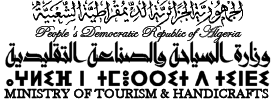very well known on the Algerian territory and in chaouia, the grandmothers often prepared this bread for us {Kesra} or as we call it Aghroum, and also on the side of the Aures (the chaouia Berbers) which is really very easy, and without rising time.
Start by pouring the semolina into a bowl, adding the salt and mixing.
Pour in the oil and sand between your hands to absorb the oil.
Add the water little by little until the dough is neither too hard nor sticky. A smooth paste.
I let it rest for 20 minutes.
Heat a non-stick pan or a special kesra tagine.
Place the dough on a tea towel or the work surface. Roll out with the palm of your hand and then with a rolling pin (it all depends on how thick you prefer, I prefer it thin)
Even out the surface and prick with a fork.
Gently place the galette on the pan and cook on one side before flipping the galette.
The galette is ready when it is cooked and golden on both sides.
it’s ready, treat yourself with a good glass of Lben or olive oil.
Terracotta tagine used to cook kesra. It is found in Algeria and especially in the East (khenchela .Bejaïa, Jijel, Constantine). It can be patterned or simply smooth. The one with the patterns is used just for what corresponds to the daily bread, the kesra. The smooth tajine can be used for cooking baghrir, harcha, msemen, batbout… In Algeria, it is placed directly on the coals to cook kesra or other breads, but here, it can be put on a tabouna that runs on gas.
Ziraoui or Rfiss Ziraoui is a very popular dessert among the Chaouis. and especially at Khenchelia It is a traditional Berber and very old recipe that the Chaouis still consume today, especially during wedding parties.
Ingredients:
- 500 g fine semolina
- 150g of butter
- 100g of honey
- 1 tsp salt
- Some walnuts, almonds and pistachios
Preparation of Ziraoui:
Mix the semolina, salt, melted butter and 10cl of water. Knead for a few seconds and stop as soon as the dough holds together. Leave to rest for half an hour.
Spread the dough on the table or a tray, and form a rectangle 5mm thick.
Depending on the cooking tool you have (tagine, frying pan, crepe maker, etc.), cook the galette on both sides for about ten minutes.
Once the galette is cooked, tear it into small pieces, then pass it through a blender to obtain small, homogeneous pieces.
Let the material obtained swell twice on the steamer, ideally with a couscoussier, as you would do with couscous seeds.
Melt the butter, add the honey, mix well before pouring over the Ziraoui. Add the walnuts, almonds and pistachios, leave to stand for 20 minutes and taste. Enjoy your lunch !
Couscous is a traditional Algerian dish that has become a popular dish nowadays, perfectly integrated into the French gastronomic imagination. But since when have we been talking about couscous and what was its route to reach our tables?
Couscous is a dish from the Maghreb, which is traditionally eaten from Morocco to Libya, but which has never been tasted east of the Egyptian border, where it is replaced by cracked parboiled wheat or bulgur. It owes its name to durum wheat and durum wheat semolina which is the basic element. It is traditionally rolled in a hollow dish, moistened with salted water and melted butter, and only then steamed. Nowadays, the semolina is cooked in a special utensil, the couscoussière, where it is separated from the broth placed in the lower compartment. Traditionally in the Maghreb, couscous is eaten with the right hand, at the end of the meal. It is a festive dish that is eaten after sunset during the fasting month of Ramadan.
Many toppings can accompany couscous. Traditionally the two most used meats are mutton or chicken. Sometimes offal, such as tripe, and sheep’s head are used. Meatballs (keftas), skewers (kebabs) and spicy beef and mutton sausages such as merguez are often added. Vegetables are varied according to local resources: carrots, turnips, onions, chickpeas, broad beans, zucchini, fennel, artichokes and often raisins…
Chakhchoukha (from the Berber chaoui, chakhchakh, which means “to crumble”) is a festive dish consisting of crumbled semolina dough, cooked in a pan, drizzled with spicy red tomato meat sauce, chickpeas and, in some regions, zucchini, carrots and turnips, beans or even potatoes. It is sometimes served with fermented milk (leben).
There are several varieties of chakhchoukha depending on the region, such as in the Algerian regions of Annaba, Constantine and Sétif, of Khenchela, of Batna, Biskra and El Oued, even in Mzab, Hoggar, and much more, in Nefta in Tunisia. The difference lies in the nature of the paste used and in the method of preparation, as well as in the addition of beans, specific to the Tunisian variant.
There is, however, a distinct peculiarity in the city variant of khenchela, which uses a different dough than the galette, which is used in the Sahara region. It is a kind of pancake cooked on an iron plate. This variant is also widely used in some towns bordering the city of Bou Saâda, such as Batna, Barika, M’Sila, Biskra, etc.
The chakhchoukha is the culinary dish par excellence in Biskra2 but it is also made and appreciated in all the Aurès and nearby. Thus, if it is substantially identical to Batna, it is quite different in Constantine in its conception, or even in Bou Saâda or M’sila. In Tunisia, in Nefta3 and Tozeur, broad beans are most often added to the filling.


